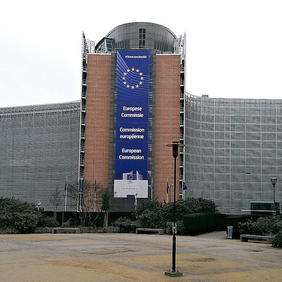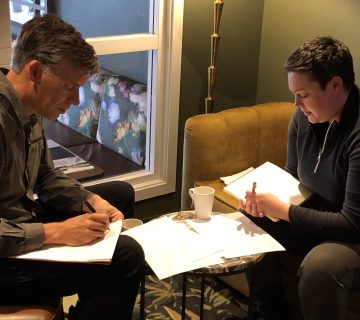Some weeks ago, the European Commission published its New European Agenda for Culture. It replaces the first one which had guided the EU’s policy framework in the field of culture for the past eleven years.
Last February, the Commission organised a stakeholder consultation meeting in Brussels in the course of the preparations for the New Agenda for Culture. I took part in this meeting as a representative of Interpret Europe. The Commission had prepared a number of questions, which were posed to (about) 35 participants. Everybody had the opportunity to answer or give a brief statement of no longer than two minutes in each round. I highlighted the opportunities of heritage interpretation to promote the EU’s core values based on Interpret Europe’s ‘Engaging Citizens’ study.
In May, the New European Agenda for Culture was finally published. It has been drafted in challenging times for the EU: ‘Emerging from a severe financial crisis, Europe faces growing social inequalities, diverse populations, populism, radicalisation, and terrorist threats.’ Furthermore, rapid change in technology and digitisation are transforming societies and lifestyles. Against this backdrop, the role of culture is considered ‘more important than ever’.
The New European Agenda for Culture states three strategic objectives regarding the social and economic dimensions and external relations. It covers the whole cultural sector, which also includes the arts and creative industries as well as heritage. However, each of the strategic objectives relates directly or indirectly to heritage and interpretation (see bold, by me):
1 Social dimension – harnessing the power of culture and cultural diversity for social cohesion and well-being
a) Foster the cultural capability of all Europeans by making available a wide range of cultural activities and providing opportunities to participate actively
b) Encourage the mobility of professionals in the cultural and creative sectors and remove obstacles to their mobility
c) Protect and promote Europe’s cultural heritage as a shared resource, to raise awareness of our common history and values and reinforce a sense of common European identity
Heritage is directly addressed under objective c and both, raising awareness of our common history and values as well as reinforcing a sense of common European identity, refer to heritage interpretation and education – although the term ‘heritage interpretation’ is not used. But heritage interpretation can also contribute a lot to objective a, especially where interpretation encourages audiences to participate actively in the interpretation process.
2 Economic dimension – supporting culture-based creativity in education and innovation, and for jobs and growth
a) Promote the arts, culture and creative thinking in formal and non-formal education and training at all levels and in lifelong learning
b) Foster favourable ecosystems for cultural and creative industries, promoting access to finance, innovation capacity, fair remuneration of authors and creators and cross-sectoral cooperation
c) Promote the skills needed by cultural and creative sectors, including digital, entrepreneurial, traditional and specialised skills
It appears a bit odd that promoting arts, culture and creative thinking has been subsumed under the economic dimension. The explanation stresses the link between education and participation in culture and the importance of ‘Cultural Awareness and Expression’ which is one of the eight transversal key-competences recognised at the European level. Here, the agenda refers to the ‘Cultural Awareness and Expression Handbook’ which was published by the Commission in 2016. This handbook, however, makes a strong point that, in the first place, arts/cultural education [encompassing heritage interpretation] is ‘for its own sake, which means acquiring cultural and artistic competences as an essential dimension in the development of a whole person’ (self-formation/’Bildung’) (p. 23). At the same time, cultural education can – and normally does – also contribute to social, economic or other educational purposes. This handbook is very valuable to put the political Agenda for Culture into perspective.
Objective 2c is relevant for heritage interpretation training which promotes specialised skills. It indicates that an Erasmus+ follow-up programme will most probably continue to support the development of training for heritage interpreters.
3 External dimension – Strengthening international cultural relations
a) Support culture as an engine for sustainable social and economic development
b) Promote culture and intercultural dialogue for peaceful inter-community relations
c) Reinforce cooperation on cultural heritage
The external relations refer mainly to international collaboration with the West Balkans, the Eastern Partnership programme and collaboration with the Mediterranean countries. It also mentions support for Silk Road Heritage corridors in Central Asia, Afghanistan and Iran.
The New Agenda mentions two cross-cutting actions. One of them is ‘protecting and valorising cultural heritage’, the other one is Digital4Culture. Heritage Interpretation is probably one of the most important means of valorising cultural heritage. The New European Agenda for Culture remains rather vague in terms of concrete actions. But there are two announcements which will translate the general policy framework into more concrete actions and funding:
• Present an Action Plan for Cultural Heritage, and ask Member States to draft similar Plans at national level and follow up the ten European initiatives through the Council Work Plans for Culture
• Propose to incorporate outcomes of the Year into future EU programmes and Cohesion Policy
Interpret Europe takes part in the Voices of Culture stakeholder consultations. We will raise the voice for heritage and interpretation – not only for the sake of our professional field, but also for a Europe with open-minded people who embrace the richness of cultural diversity.
Both, the New European Agenda for Culture and the Cultural Awareness and Expression Handbook, can be valuable sources of reference for those of you who write proposals for EU-funded projects at the interface of culture, heritage and education.
Patrick Lehnes is IE’s Cultural Heritage Coordinator. He works as a researcher at Freiburg University and as an interpretive planner and author through his company, Lehnes contexte. He can be contacted at: patrick.lehnes@interpret-europe.net.
To cite this article:
Lehnes, Patrick (2018) ‘A New European Agenda for Culture: What’s in it for heritage interpretation?’. In Interpret Europe Newsletter 2-2018, 32 – 34.
Available online:
www.interpret-europe.net/fileadmin/Documents/publications/Newsletters/ie-newsletter_2018-2_summer.pdf




